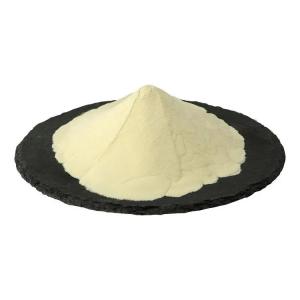Phosphatidyl serine is mixed into low-carb snacks.
Time:2025-08-18Phosphatidylserine (PS) is a naturally occurring phospholipid found in the membranes of cells, particularly in the brain. As a functional ingredient, it has attracted attention in the food industry for its potential to enhance the nutritional profile of various products. Incorporating phosphatidylserine into low-carb snacks is an emerging trend, combining the benefits of reduced carbohydrate content with the addition of bioactive compounds.
Ingredient Overview
Phosphatidylserine belongs to the class of phospholipids, which are essential components of cell membranes. It is typically sourced from soy lecithin, sunflower lecithin, or other plant-based materials, though animal-derived versions also exist. Commercial phosphatidylserine used in foods is often standardized to a specific purity and tested for stability during processing.
Formulation in Low-Carb Snacks
Low-carb snacks are designed to reduce sugar and starch content while maintaining taste, texture, and satiety. Phosphatidylserine can be incorporated into various formats, such as:
Protein bars – blended with whey, pea protein, or other protein bases.
Nut-based clusters – mixed with almonds, peanuts, or seeds, often bound with sugar-free syrups.
Baked crisps or crackers – incorporated into dough formulations using low-glycemic flours like almond or coconut flour.
Chocolate-coated bites – added into sugar-free chocolate formulations for a premium functional snack.
Processing Considerations
When adding phosphatidylserine to low-carb snacks, several factors must be considered:
Heat sensitivity – Excessive heat can degrade phosphatidylserine, so gentle processing or post-baking application is preferred.
pH stability – It remains relatively stable in neutral pH environments, making it compatible with most snack formulations.
Compatibility with other ingredients – Works well with protein powders, healthy fats, and natural flavorings.
Shelf life – Antioxidants may be added to prevent oxidative degradation.
Nutritional and Market Positioning
Phosphatidylserine in low-carb snacks appeals to consumers looking for:
Reduced carbohydrate intake
Functional ingredients in convenient snack formats
Premium, science-backed formulations
Products can be marketed toward health-conscious individuals, athletes, busy professionals, and those following ketogenic or low-glycemic diets. The combination of low-carb design and functional phospholipids supports a position in both the functional foods and better-for-you snack segments.
Regulatory and Labeling Aspects
In many countries, phosphatidylserine is considered a safe food ingredient when used within approved dosage ranges. Labeling should clearly indicate the source (e.g., soy or sunflower) for allergen transparency. Marketing claims must comply with local food regulations, avoiding unapproved health benefit statements.
Conclusion
The integration of phosphatidylserine into low-carb snacks represents a growing innovation in the functional food sector. By merging reduced carbohydrate content with the inclusion of bioactive compounds, manufacturers can create products that stand out in a competitive market. Successful formulations balance taste, texture, stability, and compliance, delivering both sensory appeal and added nutritional value.


 CN
CN





